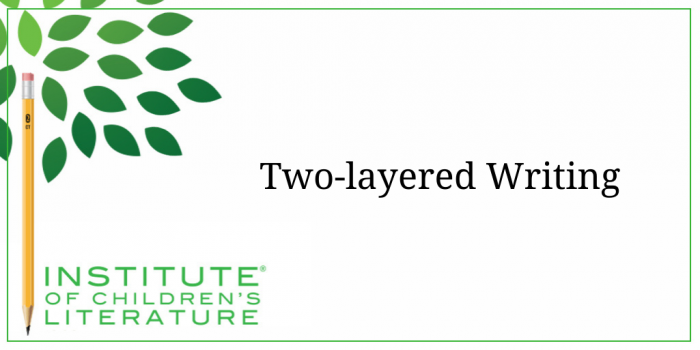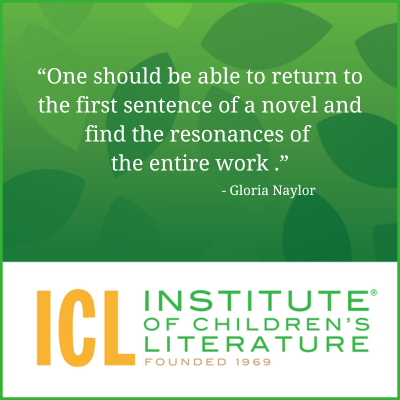1000 N. West Street #1200, Wilmington, DE 19801
© 2024 Direct Learning Systems, Inc. All rights reserved.
Beginning Tuesday, July 22, 2025 at 10 PM CT through Wednesday, July 23, 2025 at 4 AM CT, we will be performing scheduled maintenance to update our website.

Someone once asked me if I ever considered log lines for my stories. Naturally, I said, “Hunh?” Then I learned something. A log line in “Hollywood script-writing” terms is a kind of one-sentence summation of your script, preferably making it sound almost unbearably exciting. A log line sums up both the script’s objective and subjective story.

The subjective story is basically what the story is about, in human terms: Perhaps something like “strong emotion is the root of romance.” A good log line merges the two halves into one sentence to describe a script or film: After sizzling hate at first sight, can Artie and Bess work together to save a swamp they both love?
Nifty, huh? What does it say about children’s writing?
It is the nature of art, whether children’s writing, adult writing, painting, film, sculpture, that most forms have a dual nature. They have some kind of representation of reality married to what it means. In children’s writing, we tend to think of that as “story” married to “lesson,” because we think of children in terms of instruction and training. Purists balk at the idea of “lesson” and insist they should just entertain. However, much of what is entertaining in adult art contains that element of “lesson,” if you take lesson and translate it to theme.
It is the nature of living things to change. With children, the change happens more quickly and in huge leaps. Children absorb details of life around them and draw conclusions, same as adults, but because of the newness of so much of their experience, children do this more often and more quickly than adults.

After we went in the house for lunch, she informed me of the following things: “Running down a hill with a talking stick can make you fall.” “If you pour water on cat poop, it turns into black beetles.” And “You put water in birthday cake to make it stick together.” Clearly, a totally entertaining experience was also about learning. My daughter doesn’t separate entertainment and learning, so why should we, as writers? It’s important to keep in mind for our own writing that she learned these things during action and totally on her own, not because she was told what to think.
When editors ask for characters that grow and change, they aren’t asking for a story about life’s lessons. They don’t mean they want a lecture on manners disguised as a story. What they want is a story with depth. They want the situation in the story to change the main character in some way. A story with depth lingers in the mind of the reader and returns again and again. A story with depth takes a young reader into a new exciting experience and lets the reader draw conclusions, just as taking my daughter outside let her draw conclusions about the world around her. If the experience is too new or too foreign, a young reader will not have a base of comparison to build conclusions upon. So young children’s stories set in exotic places also stress the things that are the same: family relationships, for example.
To be a story that lingers in the mind of the reader (or hearer), you need both layers: what happens and what it means. Some magazine stories or even books seem to stay in the shallow end, getting by with only one of the layers showing. The English Roses by Madonna, for example, is all lengthy lesson with little story. The lesson, that one should even be nice to pretty girls, is okay, but handing children a lesson doesn’t give them enough to hold onto. Ask anyone to tell you about The English Roses and they’ll tell you who wrote it, because the contents didn’t have enough story to linger.
So, check your manuscripts today. Do they have layers? Examine your query letters, are they letting the editor/agent see all the layers in the stories you write? When it comes to writing, your mom’s old advice is still good: don’t forget to layer!
With over 100 books in publication, Jan Fields writes both chapter books for children and mystery novels for adults. She’s also known for a variety of experiences teaching writing, from one session SCBWI events to lengthier Highlights Foundation workshops to these blog posts for the Institute of Children’s Literature. As a former ICL instructor, Jan enjoys equipping writers for success in whatever way she can.
1000 N. West Street #1200, Wilmington, DE 19801
© 2024 Direct Learning Systems, Inc. All rights reserved.
1000 N. West Street #1200, Wilmington, DE 19801
© 2024 Direct Learning Systems, Inc. All rights reserved.
1000 N. West Street #1200, Wilmington, DE 19801
© 2024 Direct Learning Systems, Inc. All rights reserved.
1000 N. West Street #1200, Wilmington, DE 19801
© 2025 Direct Learning Systems, Inc. All rights reserved.
1000 N. West Street #1200, Wilmington, DE 19801
©2025 Direct Learning Systems, Inc. All rights reserved. Privacy Policy.